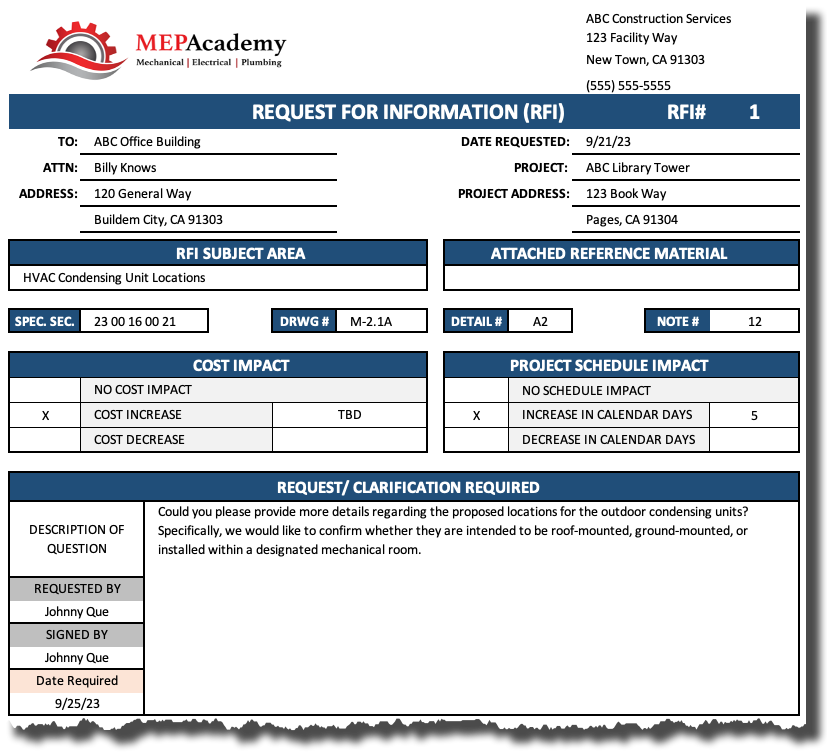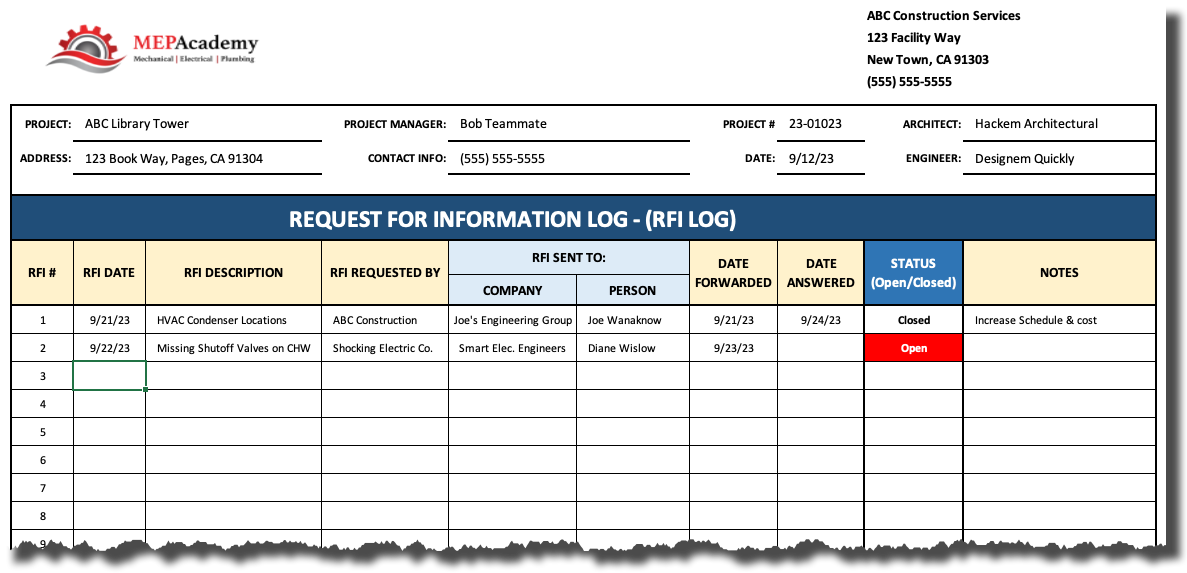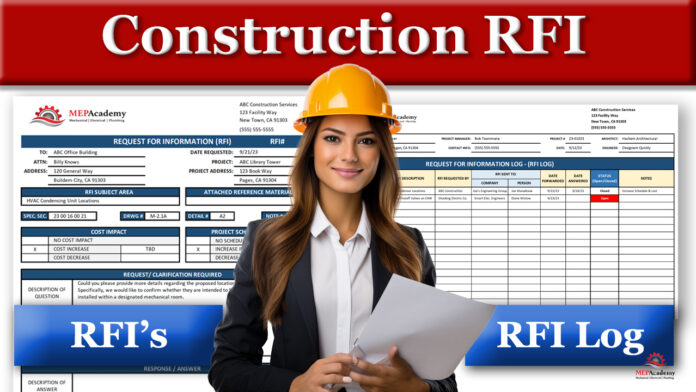Submitting a Request for Information (RFI) is an important communication tool used in construction projects to seek clarification or obtain additional information about project specifications, plans, or any other project-related matters. The use of an RFI can occur during the bidding process or during construction for clarification.
If you prefer to watch the video of this presentation, then scroll to the bottom or click on the following link. Construction RFI

Here are the steps for submitting a Construction RFI:
Get a copy of this RFI and RFI Log here. RFI and RFI Log
Identify the Information Gap
Identify the specific area or aspect of the project where additional information or clarification is needed. It could be related to design, specifications, materials, installation methods, coordination, or any other relevant issue. Keep each RFI to one area of inquiry and submit additional RFI’s for other aspects needing clarification. This simplifies your RFI process by avoiding multiple issues in one RFI. You can insert multiple questions into one RFI if they are related, and then gather the details.
Gather Details
Gather all relevant details about the issue or question you want to address in the RFI. This includes specific references to drawings, specifications, contract documents, or any other supporting information that provides context to your inquiry, and make sure the RFI is formatted correctly.
Format the RFI Document
Prepare the RFI document using the required format or template, if provided by the project owner, general contractor, or construction management team. Include a clear and concise description of the issue, along with any relevant background information that can help the recipient understand the context. Address the RFI.
Address the RFI to the Appropriate Party
Identify the appropriate recipient for the RFI. This could be the project owner, architect, engineer, design team, or the general contractor, depending on the nature of the inquiry and the project’s communication protocols. Follow the established channels for submitting RFIs to ensure the information reaches the right person or team, and provide any supporting documentation.
Provide Supporting Documentation
Include any supporting documents, such as marked-up drawings, sketches, photographs, or other visuals that help illustrate the issue or question. Attach these documents to the RFI to provide clear and specific references to aid in the response.
Clearly State the Deadline
Specify the desired response deadline in the RFI document. This helps ensure timely feedback and enables effective planning and decision-making in the project. Coordinate with the project schedule and any critical milestones to determine an appropriate response timeline.
Review and Proofread
Review the RFI document for accuracy, clarity, and completeness. Proofread the document to correct any grammatical or spelling errors. Ensure that the inquiry is articulated clearly and concisely to facilitate a better understanding by the recipient.
Submit the RFI
Send the RFI document to the designated recipient through the established communication channels. This can be done via email, online project management systems, or any other method specified by the project team. Retain a copy of the RFI for your records.
Follow Up
Track the progress of the RFI and follow up with the recipient if a response is not received within the specified timeline. Effective communication and timely responses are essential to keep the project moving smoothly and address any potential delays or issues promptly.
Review and Evaluate the Response
Once you receive a response to the RFI, review it carefully to ensure that it adequately addresses your inquiry. Evaluate the information provided and assess its impact on the project. If further clarification or action is required, communicate it promptly.
Cost or Schedule Impacts
Review the RFI response for any impacts that it might have on the cost of the project and the duration of the schedule. If either of these are impacted, then notification of the impact must be addressed immediately to comply with any timely notice clauses of the contract, and to protect your company from the impact.

RFI Log
The RFI log helps ensure that all RFI’s are recorded in a central location, making it easier for team members to communicate and collaborate on addressing questions and concerns. An RFI log serves as a historical record of project-related questions, clarifications, and decisions.
The RFI log also provides a comprehensive audit trail that can be referred to in the future for accountability, disputes, or to understand the rationale behind decisions made during construction or bidding process.
An RFI log assigns responsibility for each RFI to specific individuals or companies. This helps ensure that RFI are tracked, addressed, and resolved in a timely manner.
Summary
Remember that with a plan and specifications delivery method, the design team is responsible for providing sufficient information for the contractor to build the project. With the information lacking in some respect or needing clarification, then an RFI can help assist with any decisions that need to be made to keep the project moving.
Remember, effective RFIs are clear, specific, and focused on obtaining the necessary information or clarification. Well-crafted RFIs help ensure that all project participants are on the same page and can proceed with their work without unnecessary delays or confusion.
Get a copy of this RFI and RFI Log here. RFI and RFI Log






